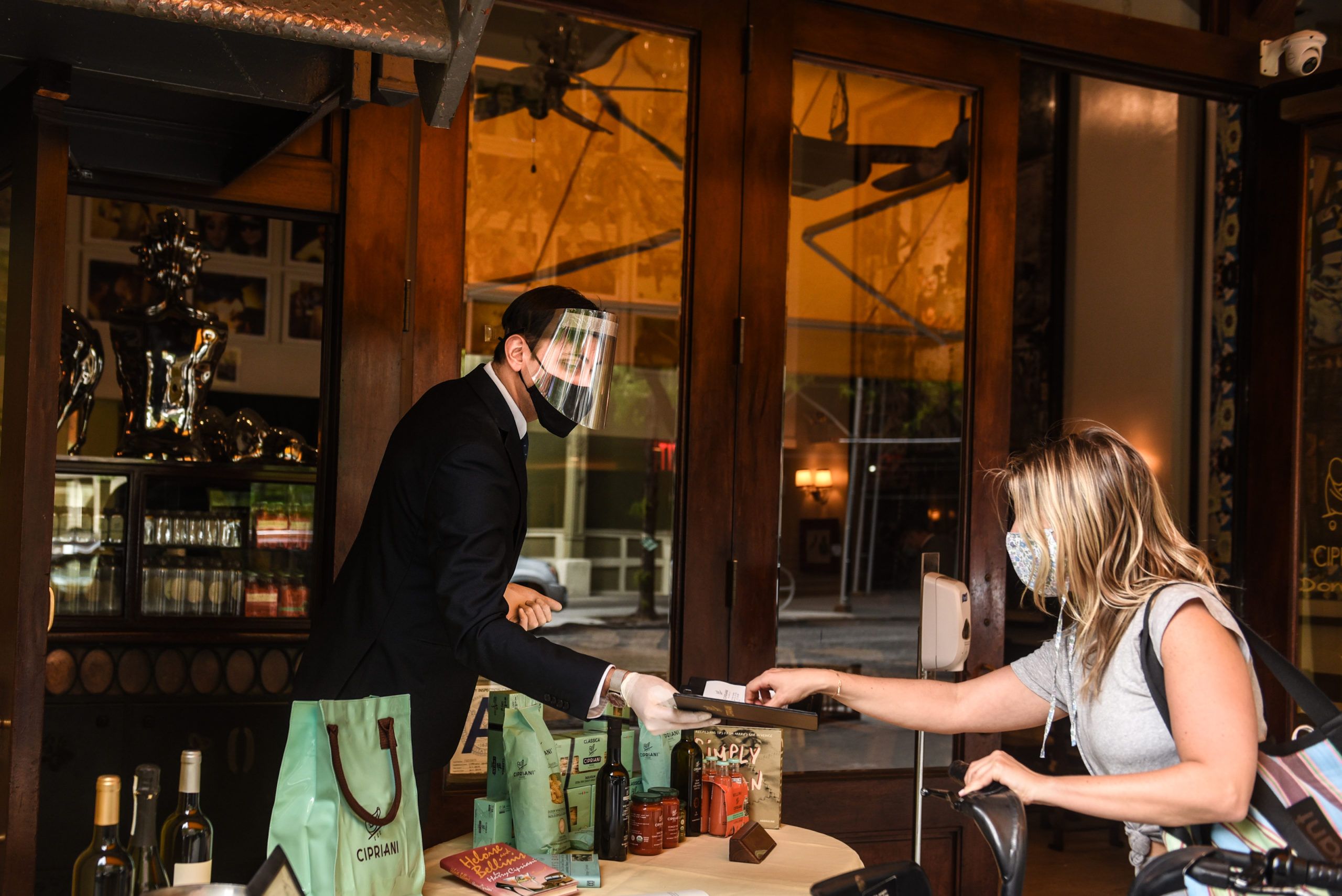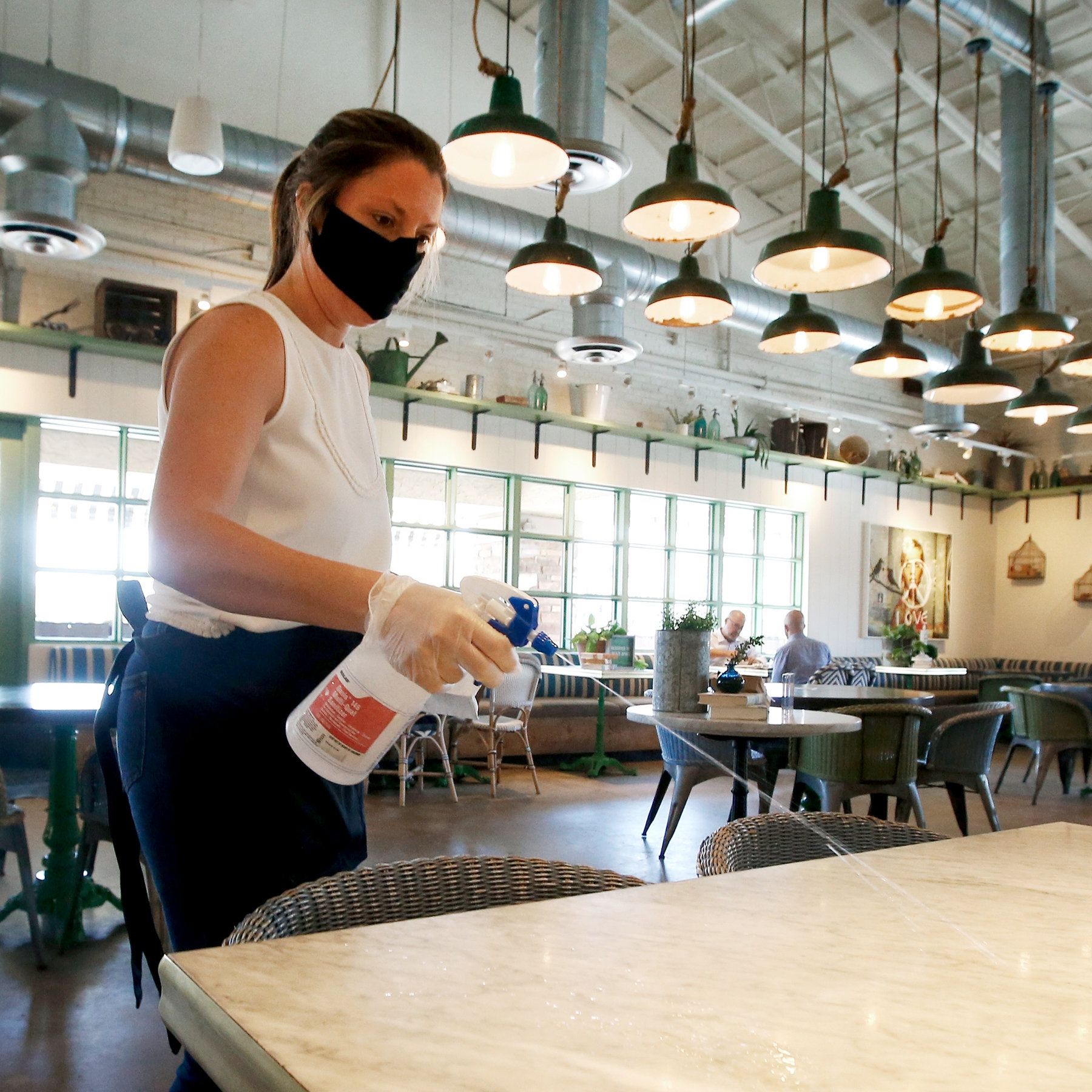With so many states reopening under their own guidelines, a common question has arisen: Is dining out a "safe" socially-distant activity? It was predicted that restaurants would follow a new normal, and though guidelines have been a bit skewed depending on the state following them, the overall experience of dining out is nothing like what it once was. But how safe can one really be when eating in public?
There's no saying whether or not dining out is completely safe. According to Eater, the fact remains that without a vaccine, there will always be a prevalent risk. The risk is greater for those who are elderly or have compromised immune systems, and care should be taken to avoid activities such as this, which could only exacerbate a potential threat. But for others, taking the risk is a personal choice. Since new methods of dining out are here to stay, what precautions can be taken to keep from getting sick, if any?
Consider The Location Of The Restaurant - Is Your State A Hotspot?
Simply put, there is no way to guarantee 100% safety when dining out without a vaccine for COVID-19. The best thing a person can do is arm themselves with the facts, which include knowing how the virus is spread. Knowing that the virus can exist in the air for up to 14 minutes and has a transmission length of six feet, most restaurants have taken precautions such as moving tables adequate distances apart and maintaining separation between employees and customers.
Despite this separation, for someone whose state is still seeing rising cases, dining out as opposed to a takeout option is probably not the best course of action because, again, there's no guarantee. For states that have declining or stable numbers, customers might perceive the risk to be a bit less, in which case it is still a personal choice.
Opt For Outdoor Seating And Limit The Time Spent At An Establishment
Ventilation at an indoor restaurant isn't as good as the option for outdoor seating. In many states, the first restrictions to be lifted were those for recreational activities outdoors, such as exercise and socially-distant park trips or hiking. The same rule applies to outdoor seating - while there's still a risk associated with this, patrons and employees are not relying on an indoor filtration system. Being out in the open air is more conducive to activities that require people to stand or sit in one place.
Furthermore, the time spent at a table should be limited. The longer customers take up space at a table, the greater their risk of coming into contact with the virus or a carrier. Shorter dining out times is all part of the new normal. According to data shared by the CDC, studies reflect that the virus travels far more easily in enclosed spaces where people are talking, laughing, and interacting - essentially turning one space into an infected bubble.
Bring A Mask, Wear It, And Make Sure Your Dining Companions (If Any) Do As Well
One surefire, proven method of containing the spread is by wearing a mask. Studies have shown overwhelming, time and time again, that a face covering is highly effective in preventing the transmission and spread of COVID-19. Since the virus is spread through large air particles, a covering will effectively help to reduce the chance of inhaling one of these particles.
While a face mask is not 100% in protecting the wearer, it is effective in preventing the spread to others - and when others are also wearing face masks, both parties will be successfully preventing transmission. While eating can't be done while wearing one (obviously), a customer can do their part by wearing a mask when ordering food, speaking to others, and waiting for their order.


